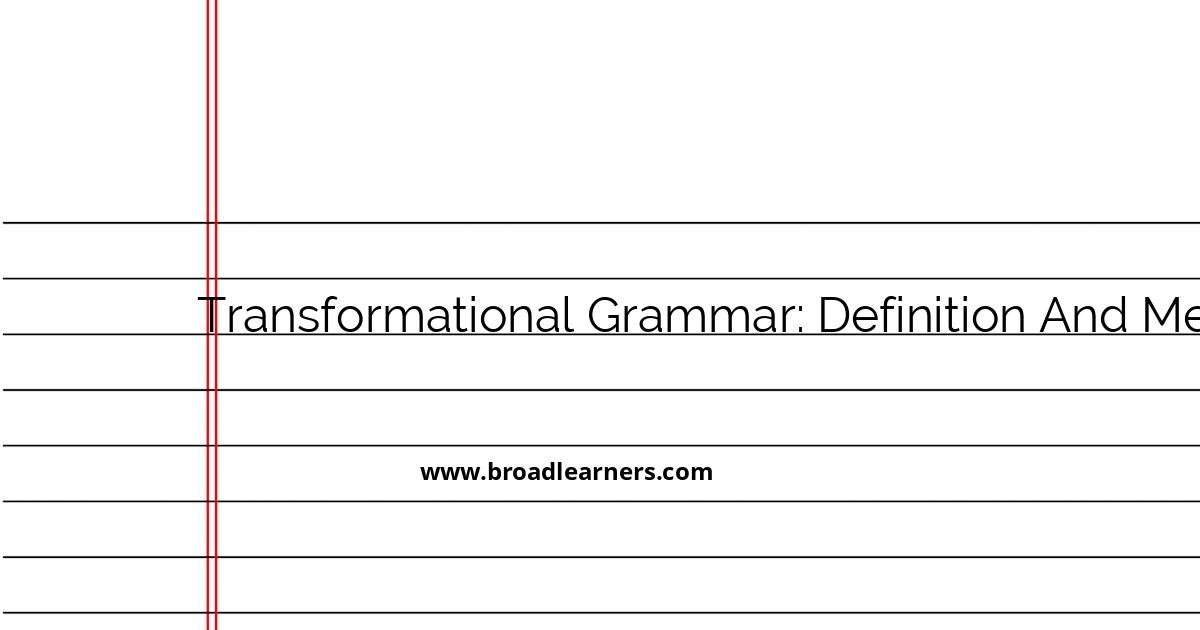Transformational Grammar (TG) is a theory of grammar that was primarily developed by Noam Chomsky in the 1950s. It revolutionized the way linguists and researchers understand how humans acquire and use language. At its core, transformational grammar seeks to describe the rules and mechanisms that govern the structure of sentences in any language.
- Definition of Transformational Grammar
- Transformational Grammar is a method of analyzing the syntax of sentences by exploring the interactions between their underlying structures, represented by 'deep structures,' and their surface forms, known as 'surface structures.' Transformational rules are applied to convert deep structures into surface structures that are comprehensible and meaningful in everyday communication.
Understanding the Basic Concepts:
- Deep Structure: This is the abstract, logical form of a sentence that represents its core semantic relationships. In transformational grammar, the deep structure is where the essential meaning resides before any syntactic transformations are applied.
- Surface Structure: The surface structure is the manifestation of a sentence as it is spoken or written. It is derived from the deep structure through transformational rules.
- Transformational Rules: These are the rules that transform a sentence from its deep structure to its surface structure. This includes operations like moving elements within a sentence, inserting elements, or altering forms to align with grammatical standards.
Chomsky’s seminal work, 'Syntactic Structures' (1957), laid the foundation for transformational grammar by proposing that all human languages share a universal set of rules (Universal Grammar) that allow for infinite syntactic possibilities.
Examples of Transformational Grammar
Example 1: Statement to Question Transformation
Deep Structure: 'You are going to the store.'
Surface Structure: 'Are you going to the store?'
In this example, a transformational rule applies to invert the subject 'You' and the auxiliary verb 'are' to form a question.
Example 2: Active to Passive Transformation
Deep Structure: 'The cat chased the mouse.'
Surface Structure: 'The mouse was chased by the cat.'
Here, a transformational rule changes the sentence from active to passive voice by altering the position of the subject and the object.
Example 3: Adding Emphasis
Deep Structure: 'John ate the pie.'
Surface Structure: 'It was John who ate the pie.'
This transformation adds emphasis to 'John' as the subject in the sentence.
Transformational grammar not only provides insight into the variety of sentence forms across languages but also posits that language acquisition and comprehension are innate capabilities. It serves as a crucial tool in computational linguistics and language processing, significantly influencing modern linguistic studies. Through understanding transformational grammar, beginners and advanced grammarians alike can appreciate the complexity and beauty inherent in human language.

Did I miss anything? Respond below